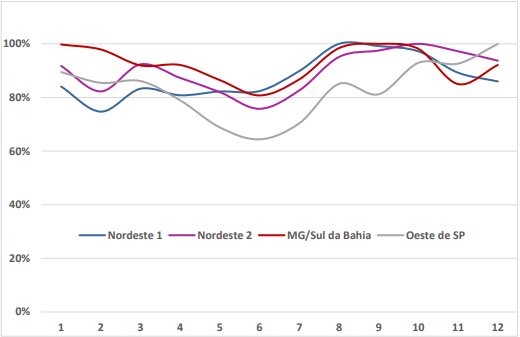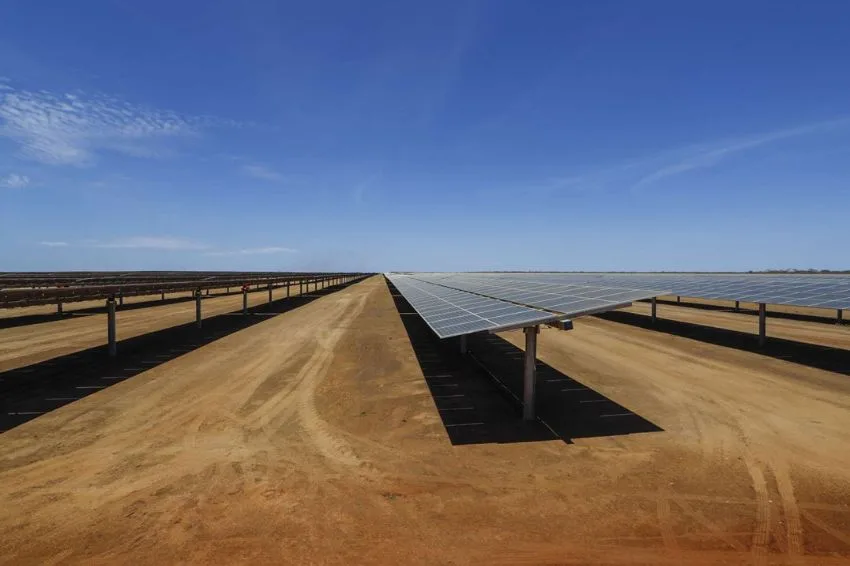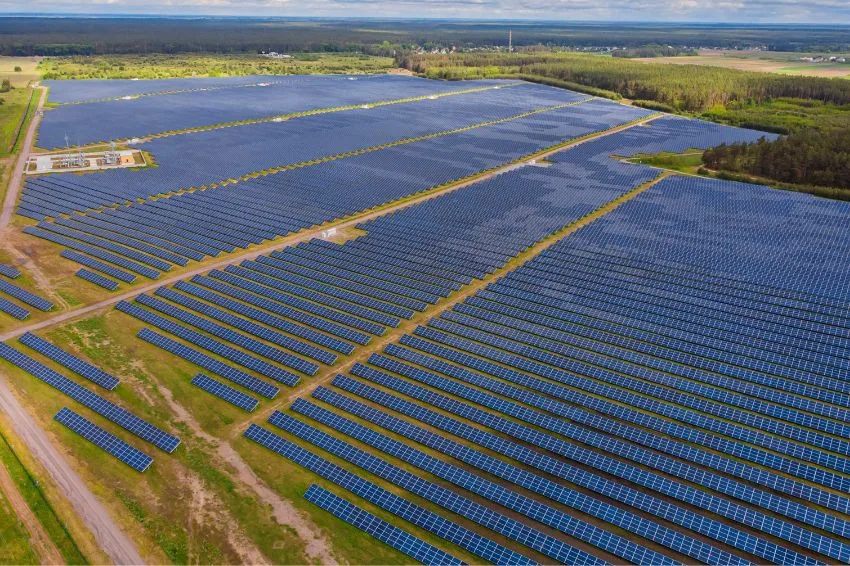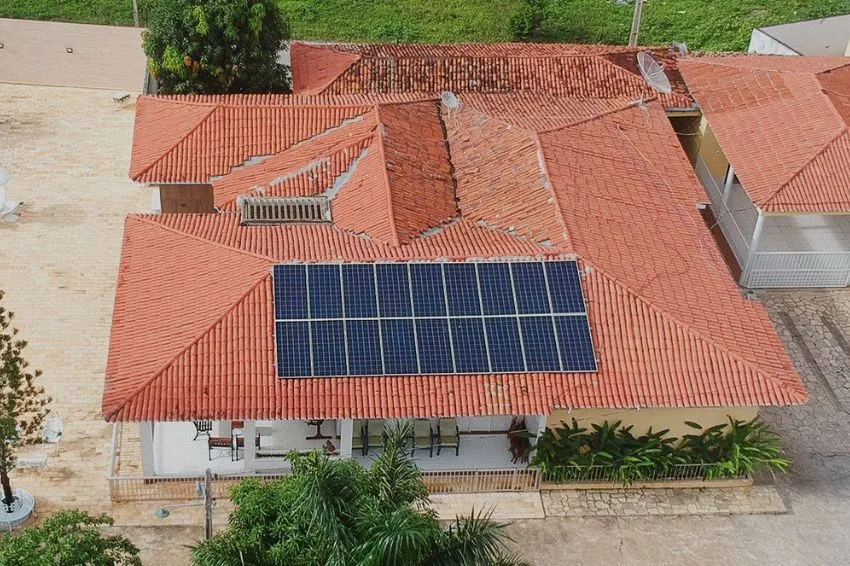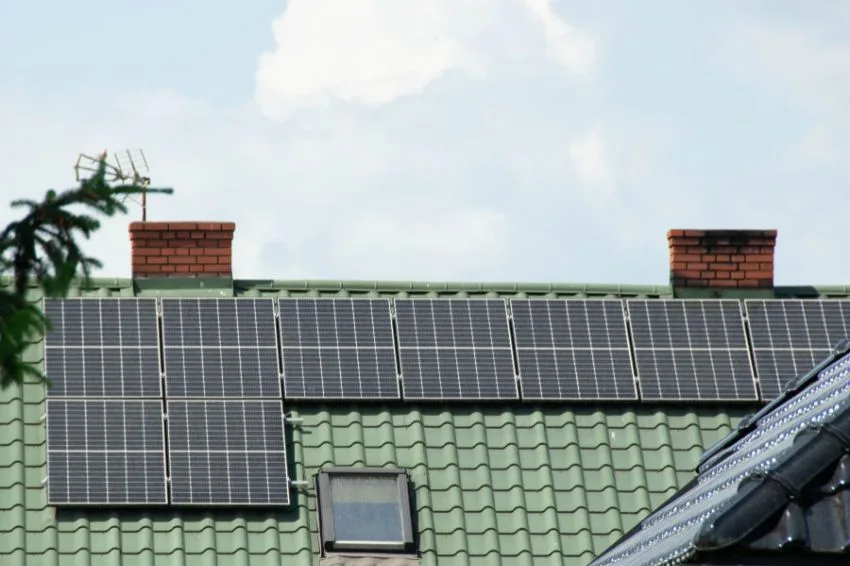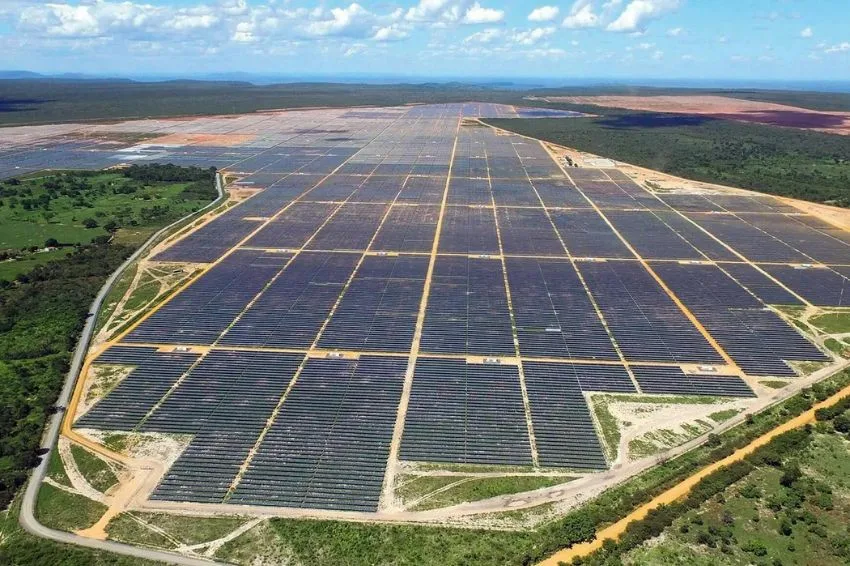It is known that Brazil has vast wind and solar potential. However, resources are not well distributed across the country, with some regions being more favorable.
In the case of wind, those with the most resources are the Northeast and the South. In terms of photovoltaic sources, it happens more homogeneously, although slightly higher in the Northeast and in the most central portion of the country.
Given this scenario, the EPE (Energy Research Company) prepared the “Fact sheet: Photovoltaic Solar Energy in SIN“, which pointed out the monthly energy contribution of solar in these regions.
According to the company, the contribution can be estimated based on the typical capacity factors of the source in the different subsystems, obtained through data from projects enabled in energy auctions in the regulated environment.
Using the AEGE System Database, they defined the monthly capacity factors (average values of the project sample) for the NE and SE/CO subsystems, on a CA basis, considering only the projects qualified in the A4 new energy auctions. /2019, A-6/2019 and A-4/2020, with single-axis tracking.
According to EPE, the capacity factor on an AC basis is used for correct comparison with other sources and consideration of the use of the transmission system. The sample comprises 863 projects in the Northeast and 72 in the Southeast/Central-West.
As a result, the factors presented in the figure below were obtained:
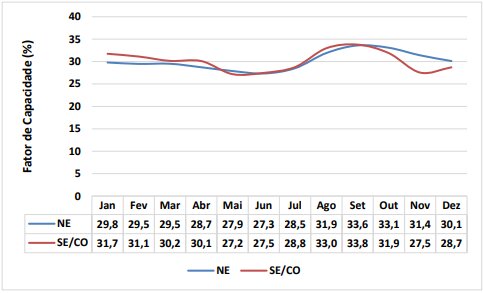
Floating power plants
For floating photovoltaic plants, considering that they generally use fixed structures, the company considered lower capacity factors than those for plants tracked on one axis, with a small gain resulting from the lower operating temperature of the modules.
Given the absence of plants of this type in the auctions, and consequently, in the AEGE system, a reduction of six percentage points was used as an approximation in relation to the values obtained for centralized plants, with tracking on one axis.
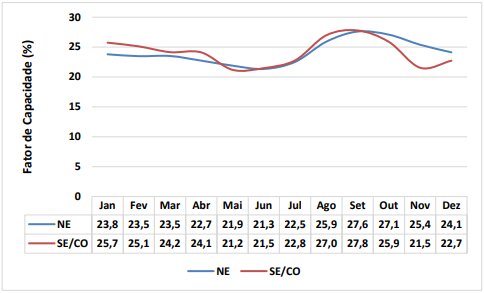
Variability of photovoltaic generation
Another point highlighted by the research refers to the spatial variability of photovoltaic solar generation, which is relatively small when compared to other sources.
In EPE's view, plants tens of kilometers apart tend to have relatively similar profiles, except in regions with rugged relief, which are little used for this source.
For this reason, each set of nearby plants is represented in the studies as just one point, using solarimetric data from that municipality.
Analyzing the monthly profiles of each location, it is clear that there are differences between the regions. Four regions with different monthly profiles were identified, shown on the map in the figure below.
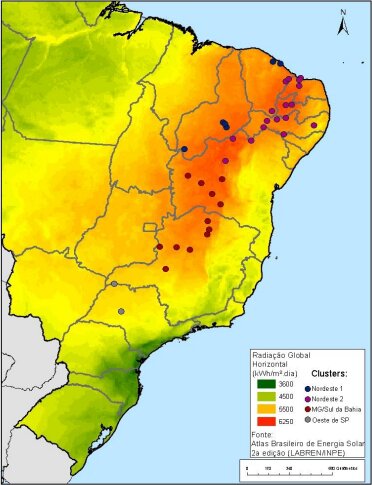
The report also exemplified the monthly profiles for each region, taking a representative location for each of these. It can be highlighted that the seasonal variations of the source are relatively small for all locations, being slightly greater for the West of São Paulo.
Furthermore, the differences between each area, although they exist, are not very significant, and depending on the study, there may not be a need to consider this division.
